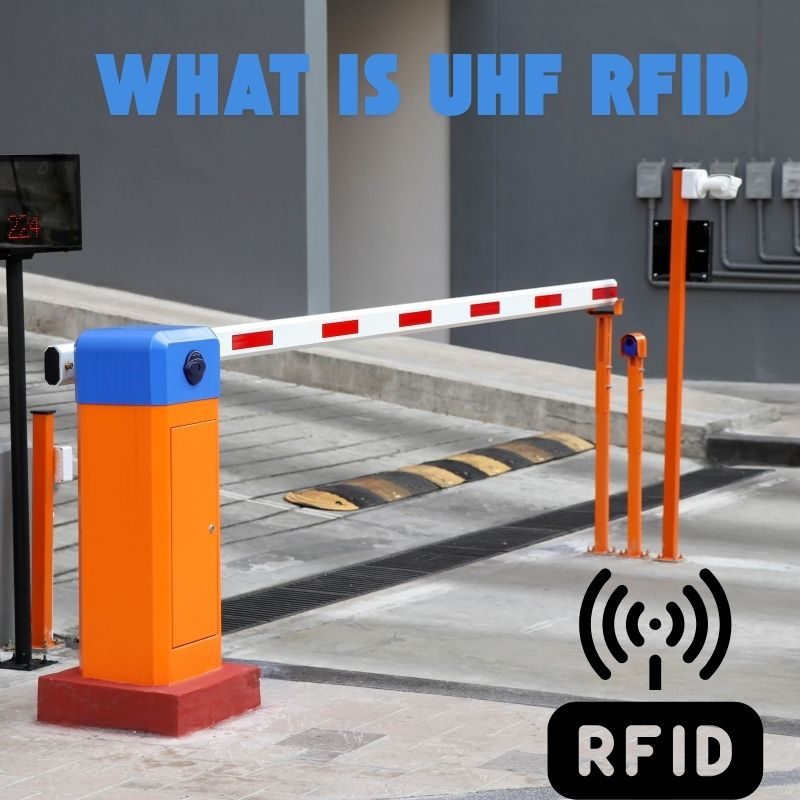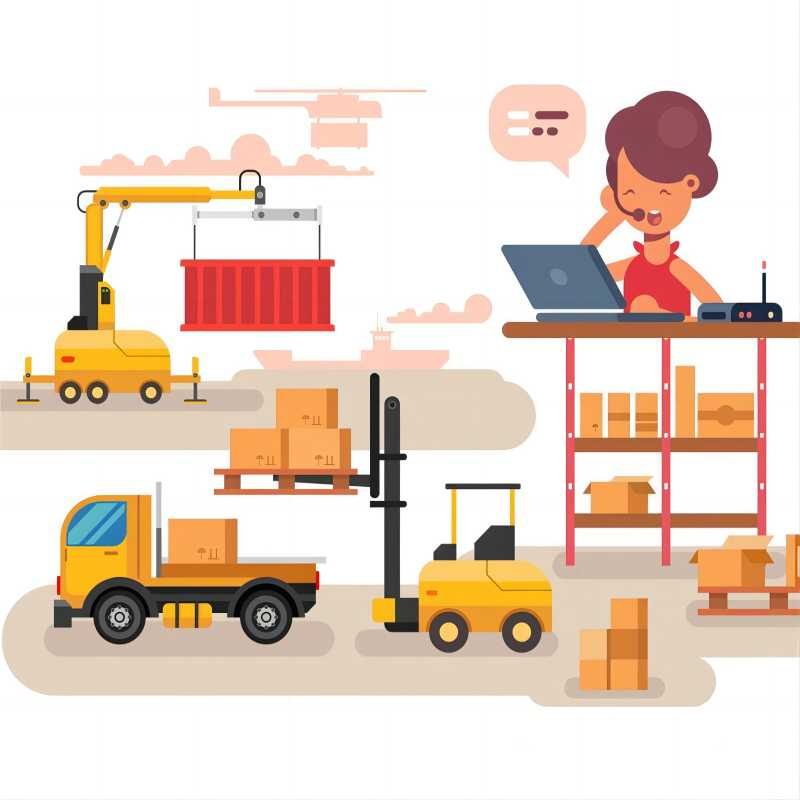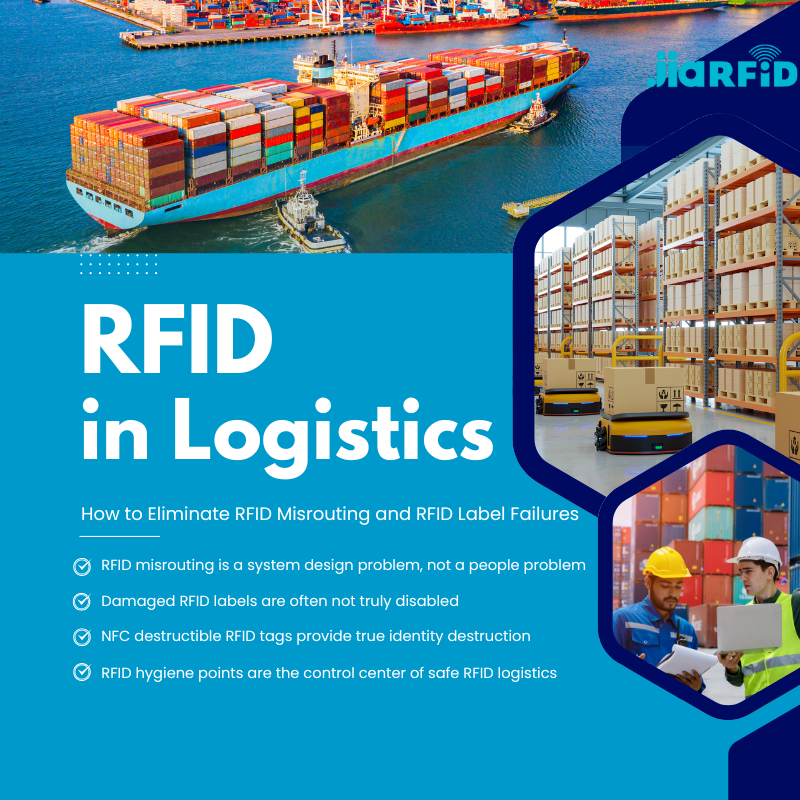
Che cosa è l'UHF RFID?
Sommario
Introduzione
RFID UHF (Identificazione a radiofrequenza ultra-alta) è una tecnologia di identificazione all'avanguardia che sta prendendo piede in vari settori. Dal commercio al dettaglio alla logistica, dalla sanità all'agricoltura, la sua capacità di consentire uno scambio di dati veloce e senza contatto sta trasformando il modo di operare delle aziende.
Che tu stia scoprendo l'RFID per la prima volta o desideri approfondire le tue conoscenze, questa guida ti illustrerà cosa RFID UHF cos'è, come funziona, quali sono le sue applicazioni e perché è una tecnologia indispensabile nel 2025.

Che cosa è l'UHF RFID?
UHF RFID, abbreviazione di Ultra-High Frequency Radio Frequency Identification (identificazione a radiofrequenza ultra-alta), è una tecnologia di comunicazione wireless che utilizza le onde radio per identificare e tracciare i tag applicati agli oggetti. È una delle tre principali categorie di frequenza nella tecnologia RFID, le altre due sono la bassa frequenza (LF) e l'alta frequenza (HF).
L'UHF opera tipicamente nella gamma da 860 MHz a 960 MHz ed è ben noto per:
- Portate di lettura più lunghe (fino a 12 metri o più)
- Trasmissione dati più veloce
- Capacità di lettura in blocco
In termini più semplici, l'UHF RFID è come un “codice a barre potenziato”: non richiede linea di vista e consente di leggere istantaneamente centinaia di articoli.
Come funziona l'UHF RFID?
Per comprendere il funzionamento della tecnologia RFID UHF, esaminiamo i suoi componenti principali:
- Tag RFID: Contengono un microchip e un'antenna che memorizzano i dati.
- Lettori RFID: Emette onde radio e riceve dati dai tag.
- Antenne: Aumenta il segnale tra i tag e i lettori.
- Middleware/Software: Elabora e gestisce i dati raccolti.
Esistono due tipi principali di Tag RFID UHF:
- Tag UHF passivi: Si basa sull'energia proveniente dal segnale del lettore; più economico e comunemente utilizzato.
- Tag UHF attivi: Alimentato a batteria; adatto per applicazioni a lungo raggio e in tempo reale.
Funzionalità chiave:
- Il lettore emette un segnale nella banda UHF.
- Il tag riceve energia, si accende e invia i propri dati.
- Il lettore raccoglie questi dati e li invia a un sistema backend per l'elaborazione.
Il sistema è in grado di leggere più tag contemporaneamente, anche ad alta velocità, rendendo la tecnologia RFID UHF ideale per ambienti dinamici come nastri trasportatori o inventari in rapido movimento.
Vantaggi della tecnologia RFID UHF
Perché la tecnologia RFID UHF sta riscuotendo così tanto successo? Perché risolve le sfide reali legate al tracciamento e all'automazione. Ecco i vantaggi principali:
- Lunga distanza di lettura: Fino a 12 metri, anche in ambienti difficili
- Lettura in blocco: Leggi centinaia di tag in pochi secondi
- Efficiente dal punto di vista dei costi: I tag passivi sono convenienti per un utilizzo su larga scala.
- Visibilità in tempo reale: Aggiornamenti istantanei sull'inventario e sui movimenti delle risorse
- Fuori dal campo visivo: Non è necessario eseguire la scansione diretta come con i codici a barre
- Scalabilità: Adatto per piccole operazioni o catene di fornitura globali
In breve, aumenta l'efficienza, la precisione e l'automazione, pilastri fondamentali per le aziende moderne.
Applicazioni comuni della tecnologia RFID UHF
La tecnologia RFID UHF è diventata una tecnologia fondamentale nei moderni sistemi di automazione e tracciabilità, offrendo portata, velocità e versatilità eccezionali. La sua capacità di leggere centinaia di tag contemporaneamente e a lunghe distanze la rende preziosa in un'ampia gamma di settori industriali.
Vedere al dettaglio
- Controllo dell'inventario
- Sistemi antifurto
- Checkout automatico
- Aggiornamenti sulle scorte in tempo reale
Logistica e catena di approvvigionamento
- Tracciamento della spedizione
- Gestione dei pallet
- Operazioni di cross-docking
- Prova di consegna
Produzione
- Tracciamento dei lavori in corso (WIP)
- Controllo qualità
- Monitoraggio delle apparecchiature
Assistenza sanitaria
- Braccialetti per pazienti
- Monitoraggio delle attrezzature
- Inventario farmaceutico
Agricoltura
- Monitoraggio del bestiame
- Monitoraggio delle attrezzature agricole
- Sistemi di irrigazione intelligenti
Biblioteche e istruzione
- Tracciamento dei libri
- Gestione delle risorse di laboratorio
- Controllo degli accessi
Indipendentemente dal settore, la tecnologia RFID UHF offre visibilità, efficienza e tracciabilità in tempo reale.
RFID UHF vs RFID HF e LF – Differenze principali
| Caratteristica | LF (bassa frequenza) | HF (Alta Frequenza) | UHF (frequenza ultra-alta) |
|---|---|---|---|
| Frequenza | 125-134 kHz | 13,56 MHz | 860-960 MHz |
| Intervallo di lettura | ~10 centimetri | ~1 m | Fino a 12 m |
| Velocità dei dati | Lento | Moderare | Veloce |
| Costo | Basso | Moderare | Variabile |
| Casi d'uso | Tracciamento degli animali | Pagamenti contactless | Catena di approvvigionamento, vendita al dettaglio, logistica |
La tecnologia RFID UHF offre la massima portata di lettura e le prestazioni più veloci, rendendola ideale per ambienti frenetici e tracciamenti di grandi volumi.
Standard e normative RFID UHF
Gli standard regolano l'uso globale della tecnologia RFID UHF per garantire la compatibilità:
- EPCglobal Gen2 / ISO 18000-6C: Standard industriale per RFID UHF passivo
- FCC (Stati Uniti): Funziona nella banda 902–928 MHz
- ETSI (Europa): Opera nella banda 865–868 MHz
- Altre regioni: Variare leggermente a seconda delle normative sulle telecomunicazioni
È fondamentale garantire la conformità alle normative regionali sulle frequenze quando si implementa la tecnologia RFID UHF a livello globale.
Tipi di tag RFID UHF
Tag RFID UHF passivi
- Più comune
- Conveniente
- Utilizzato nella vendita al dettaglio, nella logistica, ecc.
Tag RFID UHF attivi
- Alimentato a batteria
- Raggio più lungo
- Utilizzato nel tracciamento di beni di alto valore
Tag semi-passivi (BAP)
- Assistenza a batteria per prestazioni migliori
Fattori di forma dei tag
- Intarsi
- Etichette
- Etichette rigide
- Tag rinforzati per metallo o ambienti difficili
Scegli il tipo di tag in base al tuo ambiente, ai requisiti di portata e al budget.
Sfide e limiti della tecnologia RFID UHF
Come ogni tecnologia, anche l'UHF RFID non è perfetta. Ecco alcuni aspetti da considerare:
- Interferenza tra metallo e liquido: Può bloccare o distorcere i segnali
- Fattori ambientali: Le temperature estreme possono influire sulle prestazioni
- Limiti della linea di vista: I tag in pile dense potrebbero non essere letti in modo affidabile.
- Costo iniziale: L'installazione delle infrastrutture può essere costosa
- Sovraccarico di dati: Richiede un software robusto per gestire la raccolta di dati su larga scala
Ma con un'attenta pianificazione, queste limitazioni possono essere ridotte al minimo o completamente mitigate.

Tendenze future nell'RFID UHF (2025 e oltre)
La tecnologia RFID UHF non solo è qui per restare, ma sta anche evolvendo rapidamente. Le tendenze includono:
- Integrazione con l'IoT: Sensori intelligenti + RFID = potenti approfondimenti sui dati
- Sistemi RFID basati su cloud: Gestisci i tag da qualsiasi luogo
- Intelligenza artificiale e apprendimento automatico: Analisi predittiva utilizzando dati RFID
- Città intelligenti e infrastrutture: Flusso del traffico, gestione dei rifiuti e altro ancora
- Industria 4.0: Automazione industriale in tempo reale e gemelli digitali
Grazie ai costi inferiori e alle prestazioni migliori, entro la fine del decennio è prevista una diffusione su larga scala in tutti i settori industriali.
L'RFID UHF è la soluzione giusta per te?
La tecnologia RFID UHF è una tecnologia potente e scalabile che può aiutare la tua azienda a ridurre i processi manuali, tagliare le perdite e migliorare la visibilità. Che tu stia gestendo un magazzino o tracciando dispositivi medici di alto valore, i vantaggi dell'acquisizione dati ad alta velocità e a lungo raggio sono rivoluzionari.
Ma, come per tutte le tecnologie, il successo sta nel comprenderne i punti di forza e nell'implementarla correttamente.
Sei pronto a scoprire l'UHF RFID per la tua attività? Inizia consultando un fornitore affidabile di soluzioni RFID o conducendo un programma pilota per valutare le vostre esigenze.
Domande frequenti sulla tecnologia RFID UHF
Cosa significa UHF RFID?
UHF RFID è l'acronimo di Ultra-High Frequency Radio Frequency Identification (identificazione a radiofrequenza ad altissima frequenza). Si riferisce ai sistemi RFID che operano nella gamma di frequenza 860-960 MHz e sono in grado di leggere i tag da diversi metri di distanza.
Come funziona la tecnologia RFID UHF?
I sistemi RFID UHF utilizzano onde radio per la comunicazione tra un lettore e un tag. Il lettore invia un segnale che alimenta i tag passivi, i quali a loro volta inviano i propri dati al lettore. Ciò consente un'identificazione rapida e wireless degli oggetti senza necessità di una linea di vista diretta.
Qual è la portata di un sistema RFID UHF?
I sistemi RFID UHF hanno in genere un raggio di lettura compreso tra 3 e 12 metri (da 10 a 40 piedi) per i tag passivi. I tag attivi con batterie possono estendere notevolmente il raggio, talvolta fino a 100 metri o più.

Raggio Zhou
Questo articolo è stato scritto da Ray Zhou, esperto di tecnologia RFID con oltre 10 anni di esperienza nel settore.
Commenti
Prodotti caldi

RFID nella logistica: come eliminare gli errori di instradamento RFID e i malfunzionamenti delle etichette RFID
L'RFID nella logistica è molto più di un semplice strumento per velocizzare i processi. È diventato un elemento fondamentale nel funzionamento delle moderne catene di approvvigionamento.

Che cos'è la gestione dei rifiuti RFID
Immaginate una città in cui ogni bidone della spazzatura parla, non letteralmente, ma attraverso un minuscolo chip che comunica al sistema quando è pieno, quando viene svuotato e dove viene portato. Questo è ciò che fa oggi la gestione dei rifiuti RFID.

Cosa sono le guarnizioni per bulloni e le loro applicazioni? | Guida completa
Nel commercio globale e nella logistica, i sigilli a bullone svolgono un ruolo cruciale nel garantire la sicurezza e la conformità del carico. Questi piccoli ma potenti dispositivi sono progettati per bloccare container, rimorchi e porte di carico con un meccanismo antimanomissione.

Che cos'è un RFID Card Protector? Vantaggi, casi d'uso e guida all'acquisto
La tecnologia RFID (Radio Frequency Identification) è ovunque: nelle carte di credito, nei badge, nei pass di transito, nelle chiavi delle camere d'albergo e altro ancora. Offre velocità e comodità, ma apre anche la porta a un nuovo tipo di furto digitale chiamato "skimming". È qui che entra in gioco una protezione per carte RFID.

Braccialetti RFID per eventi: Guida all'acquisto di prodotti sfusi per gli organizzatori
I braccialetti RFID per eventi stanno diventando la soluzione ideale per gli organizzatori che hanno bisogno di ingressi più rapidi, prevenzione delle frodi e pagamenti senza contanti a concerti, festival e impianti sportivi. A differenza dei biglietti cartacei o dei codici QR, questi braccialetti intelligenti utilizzano chip incorporati per semplificare l'accesso, proteggere le transazioni e migliorare l'esperienza degli ospiti.

Come l'etichetta RFID sul parabrezza migliora il controllo degli accessi dei veicoli e i sistemi di pedaggio
Nel mondo frenetico di oggi, l'identificazione dei veicoli deve essere rapida, sicura e senza contatto. Un'etichetta RFID sul parabrezza offre proprio questo: un modo affidabile per gestire i pedaggi, i parcheggi e gli accessi senza fermare i veicoli.
Etichette
BLOG CORRELATI

RFID nella logistica: come eliminare gli errori di instradamento RFID e i malfunzionamenti delle etichette RFID
L'RFID nella logistica è molto più di un semplice strumento per velocizzare i processi. È diventato un elemento fondamentale nel funzionamento delle moderne catene di approvvigionamento.

Che cos'è la gestione dei rifiuti RFID
Immaginate una città in cui ogni bidone della spazzatura parla, non letteralmente, ma attraverso un minuscolo chip che comunica al sistema quando è pieno, quando viene svuotato e dove viene portato. Questo è ciò che fa oggi la gestione dei rifiuti RFID.

Cosa sono le guarnizioni per bulloni e le loro applicazioni? | Guida completa
Nel commercio globale e nella logistica, i sigilli a bullone svolgono un ruolo cruciale nel garantire la sicurezza e la conformità del carico. Questi piccoli ma potenti dispositivi sono progettati per bloccare container, rimorchi e porte di carico con un meccanismo antimanomissione.




